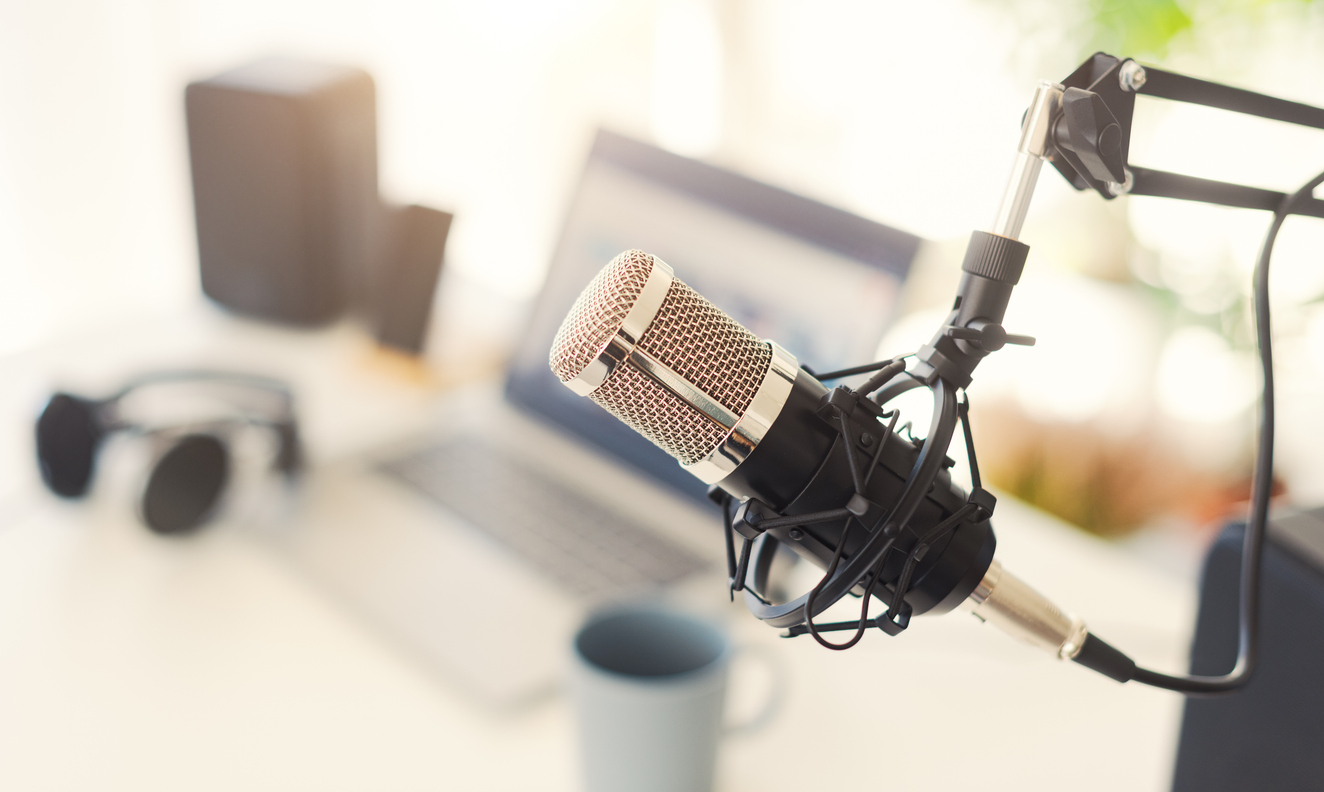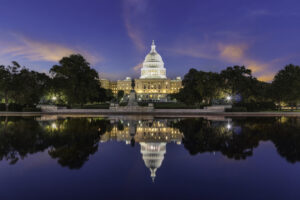The Scoop: Podcasts influence election season like never before
Also: White House strategy underscores potential power of AI; consumers remain sluggish despite improving economic landscape.

With a week and a half until Election Day, Donald Trump and Kamala Harris are doing everything in their power to engage and sway notoriously hard-to-reach segments of the American electorate.
One rare area of agreement between the candidates has been on the power of podcasts.
The Wall Street Journal reported that Trump is set to record an episode of “The Joe Rogan Experience,” the top-rated podcast in the United States.
The Journal noted that Trump has made around 17 podcast appearances so far this year, while Harris has appeared on 10 podcasts this year, appearing as both vice president and the Democratic nominee for president. She was to tape an interview with podcaster and social scientist Brené Brown on Friday. Brown’s show is popular among older women.
Why it matters: People may not be reading newspapers or tuning into the evening news as much as they used to, but this doesn’t mean they’re not interested in world events and important information.
As a result, PR professionals need to make podcasts a part of their earned media strategy, since they’ve become a regular part of many Americans’ daily lives, regardless of their background.
A report by Edison Research in May showed that podcasts reach people of all ages. About 59% of 12- to 34-year-olds listen to podcasts every month, and 55% of 35- to 54-year-olds do the same.
Podcast listeners are also diverse, with 48% of Black Americans and 43% of Hispanic Americans listening every month. The number of U.S. women listening to podcasts has reached a new high, with 45% listening monthly and 32% weekly.
In the case of this presidential race, both the Trump and Harris camps are looking for ways to engage with key demographics.
The “Joe Rogan Experience” podcast, which reaches around 15 million viewers every week, is attractive to both Harris and Trump, given its listenership of 71% male and evenly split between high school and post-secondary graduates.
For comparison, a CNN town hall featuring Harris on Wednesday drew 3.2 million viewers, with over 700,000 of them falling within the 25- to 54-year-old demographic, according to The Hill. The article noted that this figure was less than half of the 7 million viewers who watched her one-on-one interview with Fox News the previous week.
Harris had agreed to appear on Rogen’s show, despite her initial hesitation to participate in longer-form, unscripted interviews, per the Journal. However, organizing a taping has proven challenging. But it all underscores just how important podcasts have become.
Many of these listeners may be hearing from the candidates in a meaningful way for the first time. These shows offer a great chance for candidates to make a strong impression and connect with listeners on a deeper level than they could through a tweet or TV ad. While a podcast may not be enough to win someone’s vote, it can be an important first step toward doing so.
Editor’s Top Reads:
- President Joe Biden has signed a national strategy to harness artificial intelligence for enhancing national security and safeguarding the country against its potential risks. On Thursday, National Security Advisor Jack Sullivan identified some key considerations behind the strategy, including the swift advancement of AI, the uncertainty surrounding its development and the private sector’s role in future innovations. Sullivan emphasized that the administration’s primary objectives with the policy are to help the U.S. maintain its status as a leader in AI, leverage the tech to improve security and build strong international partnerships while countering China’s influence in the field. The signing of this strategy highlights the need for everyone, including PR professionals, to continue to think of new ways to use this technology. AI has proven useful for drafting press releases and generating social media content, but it’s essential to look beyond these uses. We must anticipate what’s on the horizon to avoid being caught off guard when it arrives. As Sullivan noted, “We need to prepare for all the possible ways AI could develop by 2025, 2027, 2030 and beyond.”
- Most major indicators suggest the United States economy has greatly improved over the past two years, but many Americans still struggle to cope with the fact that they’re paying much more for everything, from housing to a deli sandwich, than they did before the COVID-19 pandemic. A report this week from the Federal Reserve noted signs of Americans shifting toward “less expensive alternatives.” Although inflation has slowed down significantly, dropping to 2.4% in September, according to the U.S. Labor Department, many people still feel the pinch. A survey in late August by the Wall Street Journal found that 38% of voters believed the cost of living was still rising and causing major financial strains for their families – the highest level since the question was first asked in November 2021, when inflation was much higher. Another 26% said inflation was causing minor strains. These numbers offer a reminder that just because a person should be able to afford something on paper, it doesn’t mean they feel they can. PR pros should consider this information in their message, showing empathy to consumers while highlighting value.
- Friday marks the start of the dream PR situation for Major League Baseball as two of its biggest brands, the New York Yankees and the Los Angeles Dodgers, square off in the World Series. In recent decades, the league has lost its footing as America’s Pastime, losing audience share to the more action-packed NFL and NBA. The MLB has successfully spent the past couple seasons introducing a range of pace-of-play changes to attract modern spectators. But the World Series, taking place in the country’s two biggest markets, is a unique opportunity to attract new fans. The last time the two teams played in the Fall Classic, in 1978, a record 44 million TV viewers tuned in on average every game. “You love them, you hate them, you’ll watch. At least that’s the idea,” wrote Wall Street Journal reporter Jason Gay. Brands invest time and energy crafting data-driven messaging, earning top-tier media placements and understanding consumer behaviors. But sometimes, organic situations such as this blockbuster World Series present themselves and communicators have to be ready to be ready to capitalize on. For the MLB, it’s wasting little time highlighting the star-studded fanbases of both teams to make the World Series more of a Super Bowl-esque entertainment spectacle. Dodgers superfan and country music star Brad Paisley, for instance, is all over the league’s social media platforms. He’ll also perform the National Anthem before Game 1. Not every company has a primetime national TV broadcast to help promote its products, of course, but they all have the equivalent of a Yankees-Dodgers World Series – be ready.
Casey Weldon is a reporter for PR Daily. Follow him on LinkedIn.







